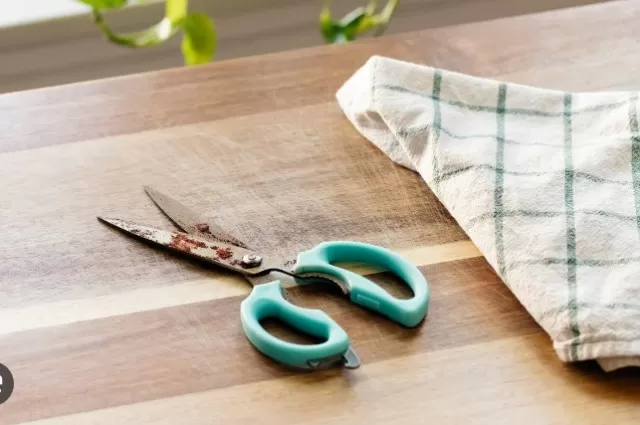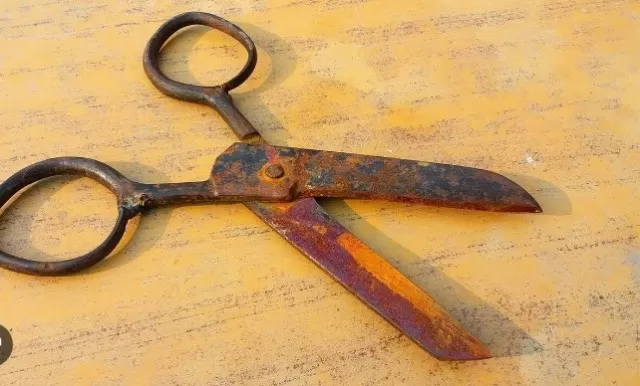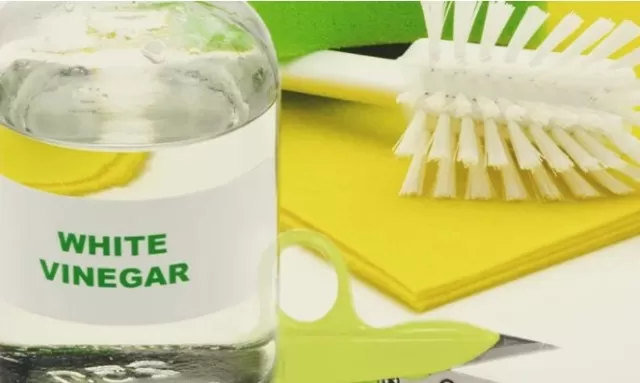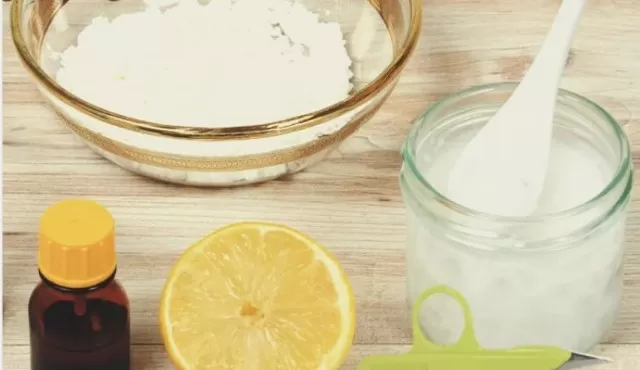How to Quickly Clean Sticky or Rusty Scissors. Scissors are versatile tools that often encounter various dirty tasks, such as slicing through tape, trimming hair, or even navigating glue-coated construction paper during craft time. Sometimes, they may be left exposed to the elements, resulting in rust accumulation that renders them immobile.
Regardless of how sticky or rusty they become, it is worthwhile to attempt restoring scissors to their original, gleaming, and ready-to-cut condition. Luckily, the process is straightforward and typically involves just one ingredient and a cloth or non-scratch scouring pad. Remember to assign this task exclusively to adults for safety purposes.
Maintaining Scissors’ Cleanliness: Frequency and Considerations

When it comes to cleaning scissors, the frequency largely depends on the nature of their usage.
Here are some guidelines to help you determine how often you should clean your scissors:.
Kids’ Craft Projects: If your scissors are frequently used for children’s craft projects, they are more likely to accumulate stickiness from adhesives, paints, or other materials.
In this case, it’s advisable to clean them more often to maintain their functionality.
Food Preparation: When using scissors for handling food, it is essential to prioritize hygiene.
To ensure food safety, it is recommended to clean scissors thoroughly after each use. This practice helps prevent cross-contamination and maintains cleanliness.
Paper Cutting: Scissors primarily used for cutting paper may require cleaning less frequently compared to other tasks.
However, it is still beneficial to periodically clean them to remove any accumulated dust or debris, which can affect their performance over time.
Remember, maintaining clean scissors not only extends their lifespan but also ensures optimal performance.
By adapting the cleaning frequency to the specific usage, you can keep your scissors in excellent condition for various tasks.
Key Factors to Consider Before Cleaning Sticky or Rusty Scissors

Before proceeding with a cleaning method for sticky or rusty scissors, it’s important to take into account the severity of the situation and the specific use of the scissors in your household.
Consider the following factors:.
Degree of Stickiness or Rust: Assess the level of stickiness or rust on the scissors.
If there is minimal residue, such as tape residue, and the scissors are still usable, a simple vinegar treatment may be sufficient to resolve the issue. However, if the scissors are heavily coated with craft glue or severely rusted, a stronger cleaning solution may be required.
Type of Residue: Identify the nature of the residue on the scissors.
Different substances may require different cleaning methods. For instance, craft glue may necessitate a more potent cleaner, like citrus oil, to effectively remove it.
It’s important to select an appropriate cleaning solution based on the specific type of residue present.
Usage in the Kitchen: If the scissors are primarily used in the kitchen for food-related tasks, it is crucial to prioritize food safety.
Ensure that the cleaning products you choose are specifically labeled as food-safe to avoid any potential contamination.
By considering the severity of the cleaning situation and the intended use of the scissors, you can make an informed decision on the most suitable cleaning method and select the appropriate products to restore your scissors to their optimal condition.
To clean sticky scissors with white vinegar, follow these steps

Prepare the Vinegar Solution: Take a clean, thick cloth and soak it in undiluted white vinegar.
Ensure that the cloth is thoroughly saturated but not dripping.
Wipe the Blades: Gently wipe the blades of the scissors with the vinegar-soaked cloth, focusing on the areas affected by stickiness.
Apply light pressure and continue wiping until all the Sticky Residue is removed. If needed, repeat the process until the scissors are entirely clean.
Final Wipe and Drying: After removing the sticky residue, give the scissors a final wipe using a clean, dry cloth.
Make sure to remove any excess vinegar from the blades. It’s essential not to rinse the scissors with water, as moisture can promote rust formation.
Tip: Avoid using water for cleaning the scissors, even after Using Vinegar.
Any residual moisture can increase the risk of rusting.
To clean rusty scissors with white vinegar, follow these steps:

Fill a Bowl with White Vinegar: Take a large bowl and fill it with white vinegar.
Make sure the vinegar level is sufficient to completely submerge the rusty scissors. Allow the scissors to soak in the vinegar for several days.
The acidic properties of vinegar help dissolve the rust.
Scrub the Scissors: After soaking, remove the scissors from the vinegar.
Using a non-scratch scouring pad, gently scrub the blades to remove the rust. This may require some effort and elbow grease to effectively remove the rust buildup.
Wipe with Vinegar-Soaked Cloth: Take a clean cloth and soak it in white vinegar.
Use the vinegar-soaked cloth to wipe down the scissors, focusing on areas with remaining rust residue. Repeat this process until all traces of rust are eliminated.
Dry the Scissors: After removing the rust, dry the scissors thoroughly using a clean cloth.
Ensure that no moisture remains on the blades to prevent further rust formation.
Tip: If you use the scissors for food-related tasks, it’s important to only use food-safe cleaners.
In such cases, white vinegar is a suitable and safe option for cleaning rusty scissors.
To clean sticky scissors with a citrus oil cleaner, follow these steps:
Apply Citrus Oil Cleaner: Use a citrus oil cleaner, such as Goo Gone®, and apply it directly to the blades of the sticky scissors.
Ensure that the cleaner covers the affected areas. Let it sit and penetrate the sticky residue for five to ten minutes. Citrus oils are effective in breaking down sticky substances.
Wipe Off the Cleaner: Take a cloth and wipe away the citrus oil cleaner from the scissors.
You may need to make several passes to remove all the residue. If there is any lingering oil from the cleaner, give the scissors a final wipe with vinegar to eliminate it.
It’s important to note that different citrus oil cleaners may have specific instructions and recommended contact time.
Follow the instructions provided by the specific cleaner you are using to achieve the best results.
By using a citrus oil cleaner, you can effectively cut through sticky residue and restore your scissors to a clean and functional state.
To help maintain clean scissors for longer periods, consider the following tips:
Avoid Water Usage: Refrain from using water on scissors, even after cleaning.
Moisture can lead to rust formation, even if you believe the scissors are thoroughly dry. Stick to dry cleaning methods instead.
Lubricate with Oil: If your scissors still have difficulty moving smoothly, even after cleaning, apply a few drops of oil or WD-40 to the screw that holds the blades together.
This helps lubricate the joint and improves the scissors’ functionality.
Choose a Cloth over Cotton Balls: When removing sticky residue, opt for a cloth instead of cotton balls.
Cotton balls tend to stick to the residue, making the situation worse before it improves. A cloth provides better control and reduces the likelihood of further stickiness.
By following these tips, you can maintain cleaner scissors for an extended period, ensuring their optimal performance and preventing issues like rust or worsening stickiness.
*The information is for reference only.